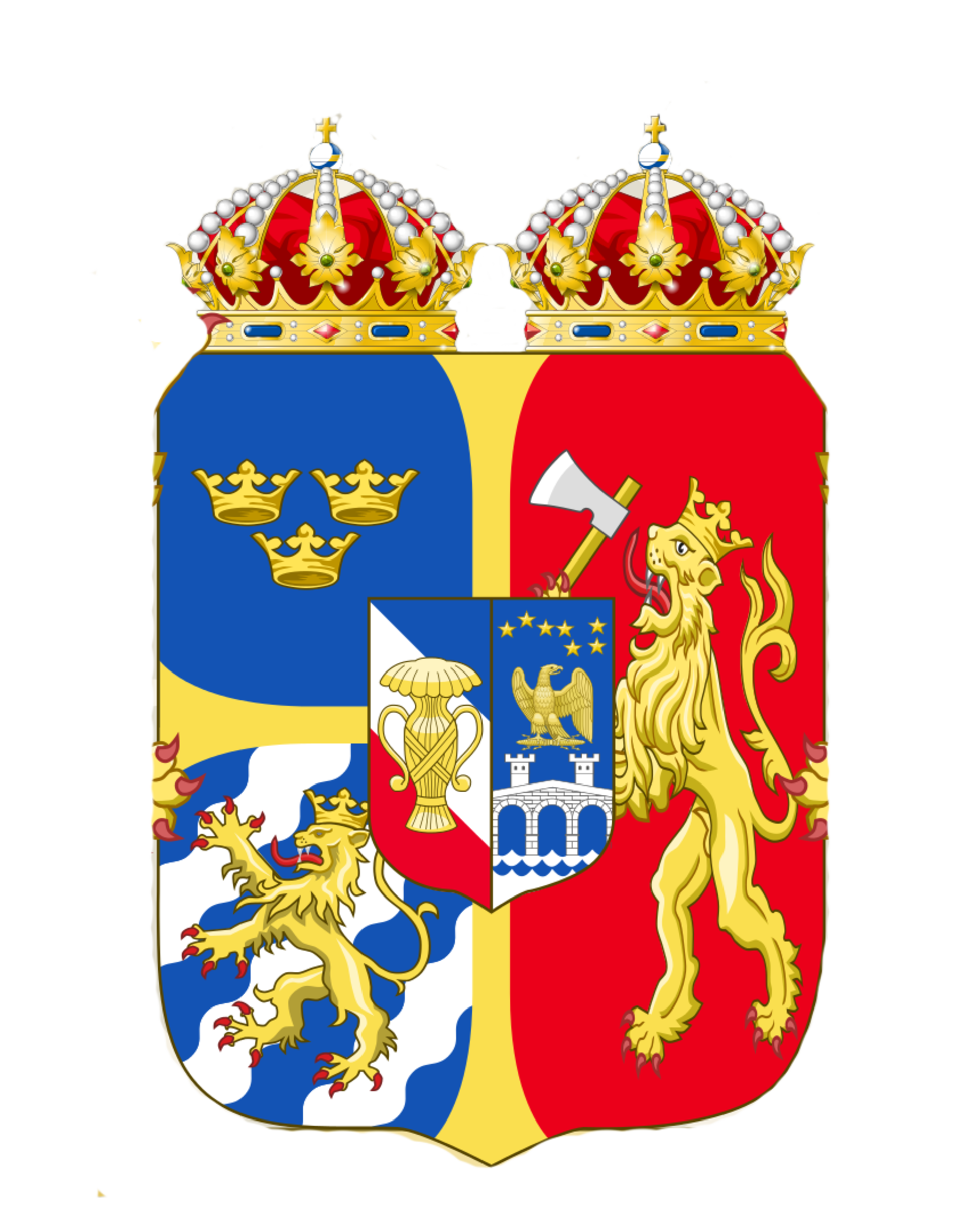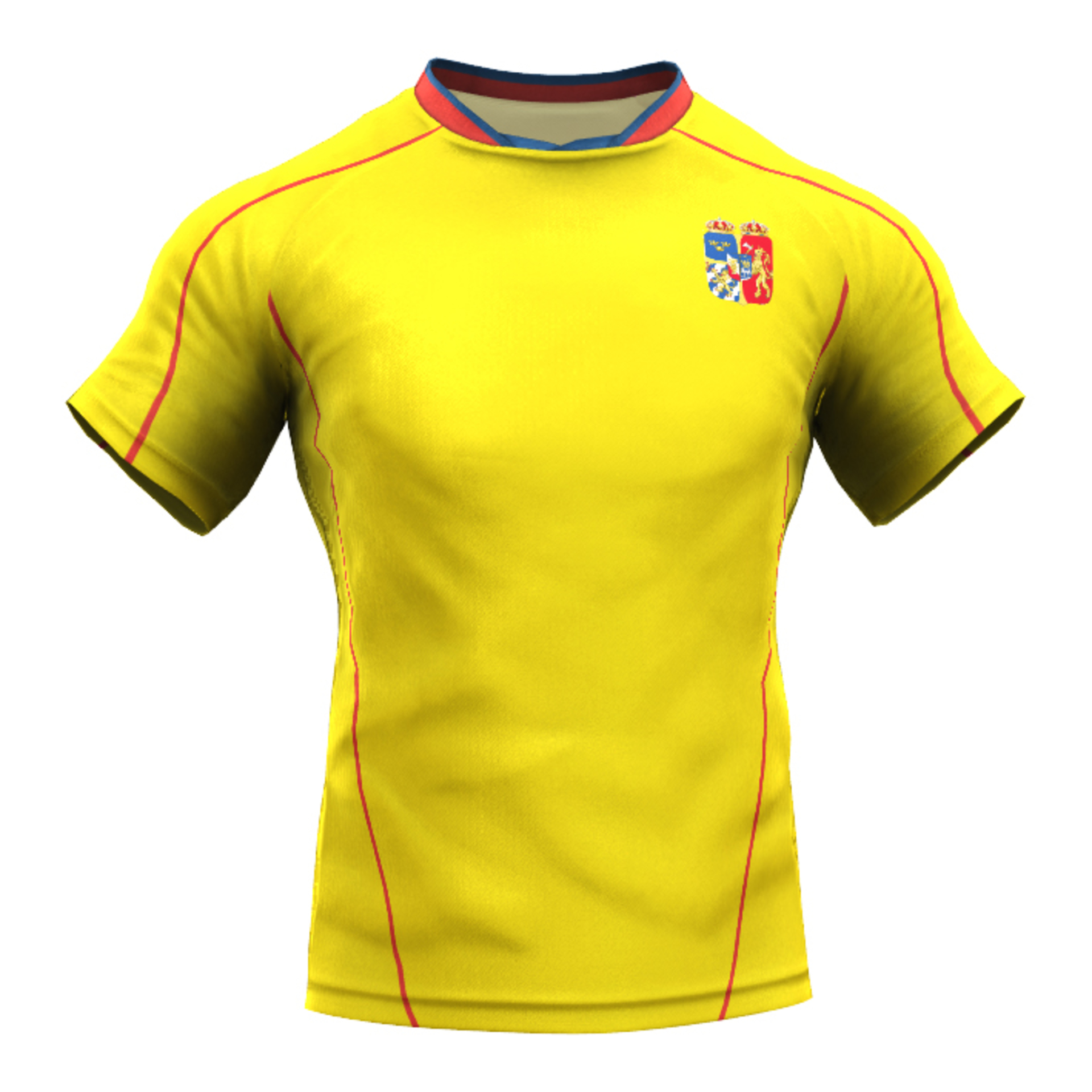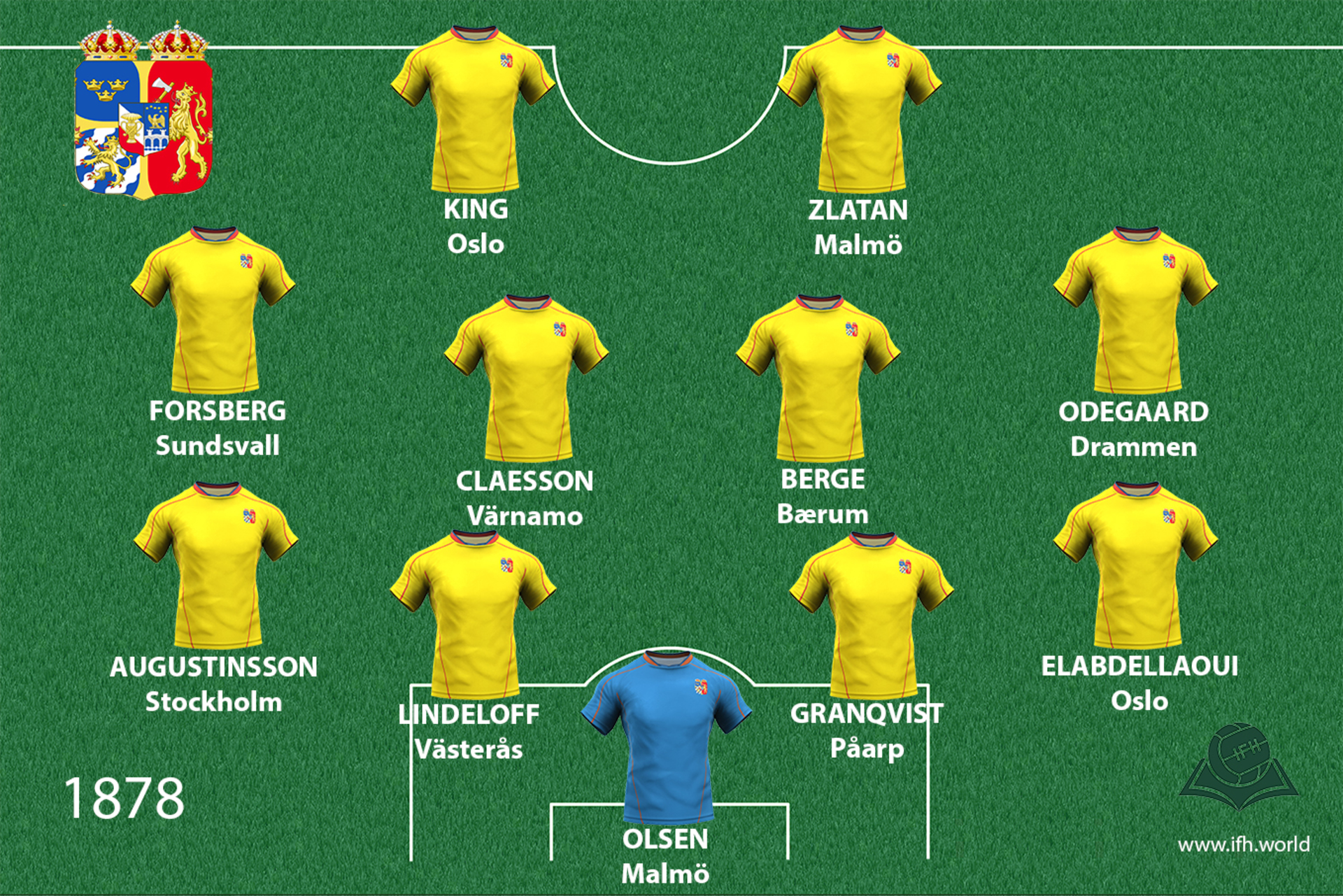United Kingdoms of Sweden and Norway
Sweden finished the Napoleonic war on the winning side and, as compensation for its losses (German territories, Finland), gained Danish rights in Norway (1814), whose independence wasn’t deemed as very important to the great powers.

Coat of arms

Shirt
| Position | First name | Last name | Mjesto rođenja | Like | Dislike | |
|---|---|---|---|---|---|---|
| GK | Robin | OLSEN | Malmö |
0 |
0 |
|
| GK | Rune | JARSTEIN | Porsgrunn |
0 |
0 |
|
| DC | Andreas | GRANQVIST | Påarp |
0 |
0 |
|
| DC | Karl | ARNASSON | Göteborg |
0 |
0 |
|
| DC | Pontus | JANSSON | Arlöv |
2 |
0 |
|
| DRL | Martin | LINNES | Sander |
0 |
0 |
|
| DR | Mikael | LUSTIG | Umeå |
1 |
0 |
|
| DR/AMR | Omar | ELABDELLAOUI | Oslo |
0 |
0 |
|
| DL | Ludwig | AUGUSTINSSON | Stockholm |
1 |
0 |
|
| DL | Oscar | WENDT | Göteborg |
0 |
1 |
|
| DL/ML | Martin | OLSSON | Gävle |
0 |
0 |
|
| DC/DMC | Harvard | NORDTVEIT | Vats |
0 |
0 |
|
| DC/DMC | Victor | LINDELOF | Västerås |
4 |
0 |
|
| MC | Jakob | JOHANSSON | Trollhättan |
0 |
0 |
|
| MC | Markus | HENRIKSEN | Trondheim |
0 |
0 |
|
| MC | Oscar | HILJEMARK | Gislaved |
0 |
0 |
|
| MC | Per Ciljan | SKJELBRED | Trondheim |
0 |
0 |
|
| MC | Pontus | WERNBLOOM | Kungälv |
2 |
0 |
|
| MC | Sander | BERGE | Bærum |
2 |
1 |
|
| MRC | Viktor | CLAESSON | Värnamo |
0 |
0 |
|
| AMRLC | Arber | ZENELI | Säter |
0 |
0 |
|
| AMRLC | Martin | ØDEGAARD | Drammen |
3 |
0 |
|
| AMRL | Emil | FORSBERG | Sundsvall |
3 |
0 |
|
| AMRL | Sam | LARSSON | Göteborg |
2 |
0 |
|
| FRLC | Alexander | ISAK | Solna |
0 |
0 |
|
| FRLC | Joshua | KING | Oslo |
1 |
0 |
|
| FC | John | GUIDETTI | Stockholm |
2 |
0 |
|
| FC | Marcus | BERG | Torsby |
0 |
0 |
|
| FC | Zlatan | IBRAHIMOVIĆ | Malmö |
19 |
4 |
|
| FC/SS | Ola | TOIVONEN | Degerfors |
0 |
0 |
Norway in the union with Sweden had no independent diplomatic relations, but retained its constitution, parliament and government. In the beginning of the 19th century, Norwegian and Swedish culture were essentially similar: both countries had a traditional rural society and the same Lutheran religion, and the urban parts of both countries had a more similar language than the one in rural parts of their nations. In the spirit of romantic nationalism that overtook Europe in the 19th century, the Viking age was glorified among both the Swedes and the Norwegians.
This combination of Vikings and nationalism is the perfect illustration of how the mythical aspect is inseparable when creating a “nation” in legendary times. On one hand the pagan Vikings were merged with Christian crosses on all Scandinavian flags. On the other hand, neither the Swedish nation nor the country existed in the early middle ages of the Vikings. The Norwegian national ideologists found genealogical continuity with Viking leaders especially important, since they used it to indicate their own independent history. The city bourgeoisie was searching for “authentic Norwegian culture” so they brought some objects from far away valleys to cities and pronounced them authentic expressions of “Norweiganism”.
Sources
- Thomas H. ERIKSEN, Etnicitet i nacionalizam, Beograd, 2004.
- Felipe FERNANDEZ-ARMESTO, Narodi Europe, Zagreb, 1997.
- Eric J. HOBSBAWM, Nacije i nacionalizam, Zagreb, 1993.
- Pal KOLSTO, ''Procjena uloge historijskih mitova u modernim društvima'', Historijski mitovi na Balkanu (ur. Husnija Kamberović ), 2003, Sarajevo, 11-39
- ''History of Denamrk'', https://en.wikipedia.org/wiki/History_of_Denmark#Christianity.2C_expansion_and_the_establishment_of_the_Kingdom_of_Denmark
- Mattias GARDELL, ''Gods of the Blood: The Pagan Revival and White Separatism'',
- https://books.google.hr/books?id=FIwwWSSL5JIC&pg=PA227&lpg=PA227&dq=SWEDISH+NATIONALISM+VIKINGS&source=bl&ots=tCNMYjLDou&sig=2qm4QKieNDlUvza4Y1Q4__JQy1k&hl=hr&sa=X&ved=0ahUKEwilg4Ol8Y_KAhVFjg8KHQwECxAQ6AEIQjAG#v=onepage&q&f=false
- Coat of arms: https://en.wikipedia.org/wiki/Union_between_Sweden_and_Norway
